What is cassava or yuca? Find out everything you need to know about it, its potential health benefits, how to cook it properly, and much more, including its derivative tapioca.
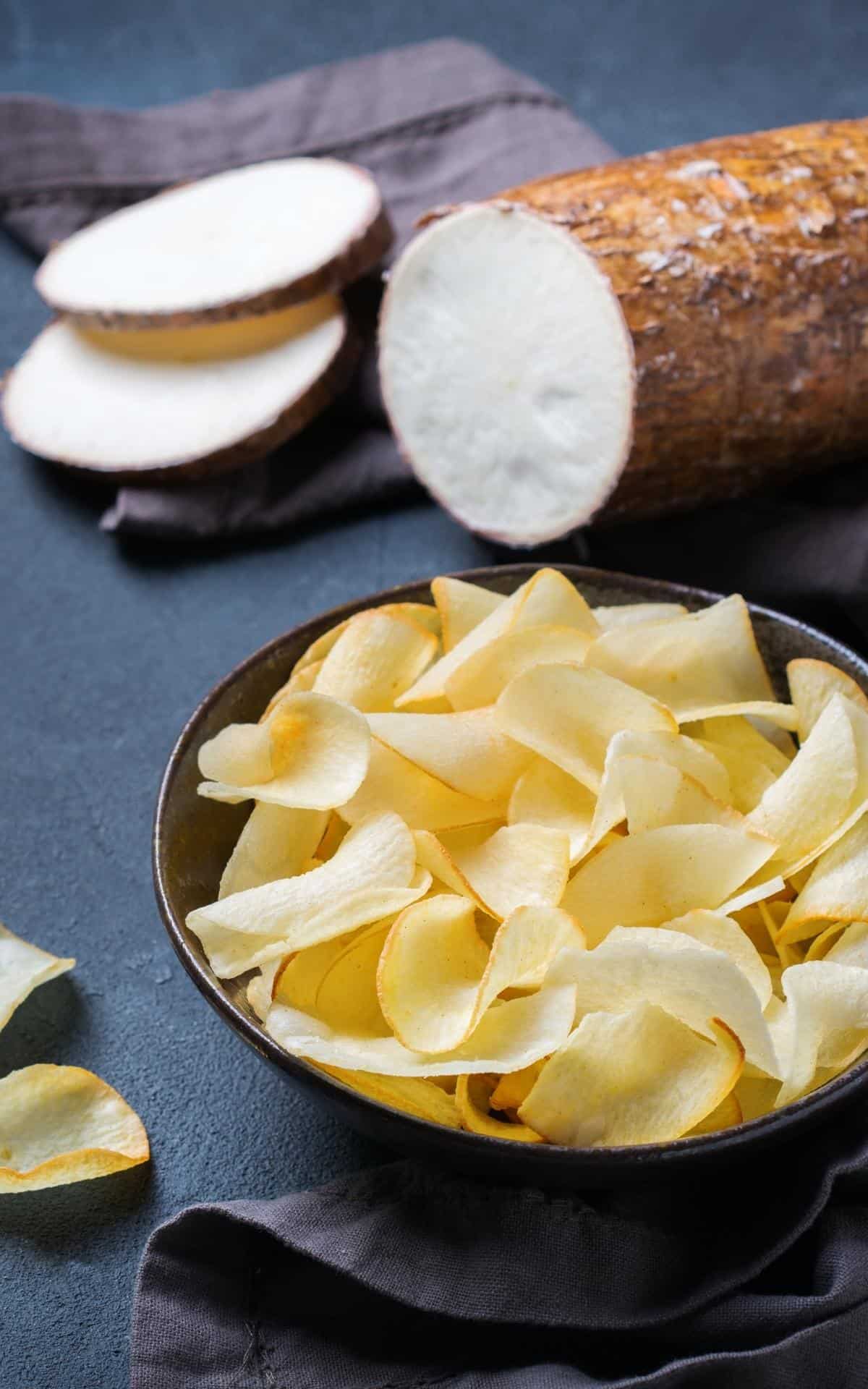
Cassava? Yuca? What is that?
It's the third-largest source of carbohydrates in the tropics.
More than half a billion people all around the globe consume this vegetable root which grows in marginal soils.
Most of all, yuca or cassava is one of the pillars of Brazilian cuisine and is important in many other cultures as well, including Central and South American, African, and Asian.
What about American culture?
Actually, it has likely been more of a presence at your table than you may imagine, and with globalization, it will become even more so.
Huh???
What do you think your beloved tapioca pudding is made from?
When you visit the beverage kiosk at the mall and order a bubble tea, what do you think you're drinking?
Not so far from the potato shelf at the Walmart supermarket (among other chains), what do you think that long, thick, brown-skinned veggie root is?
So, did you know what the main ingredient of those famous Brazilian cheese rolls (pão de queijo) served at your favorite churrascaria is?
Processed cassava root (tapioca flour) is also the key ingredient for Brazilian tapioca crepes!
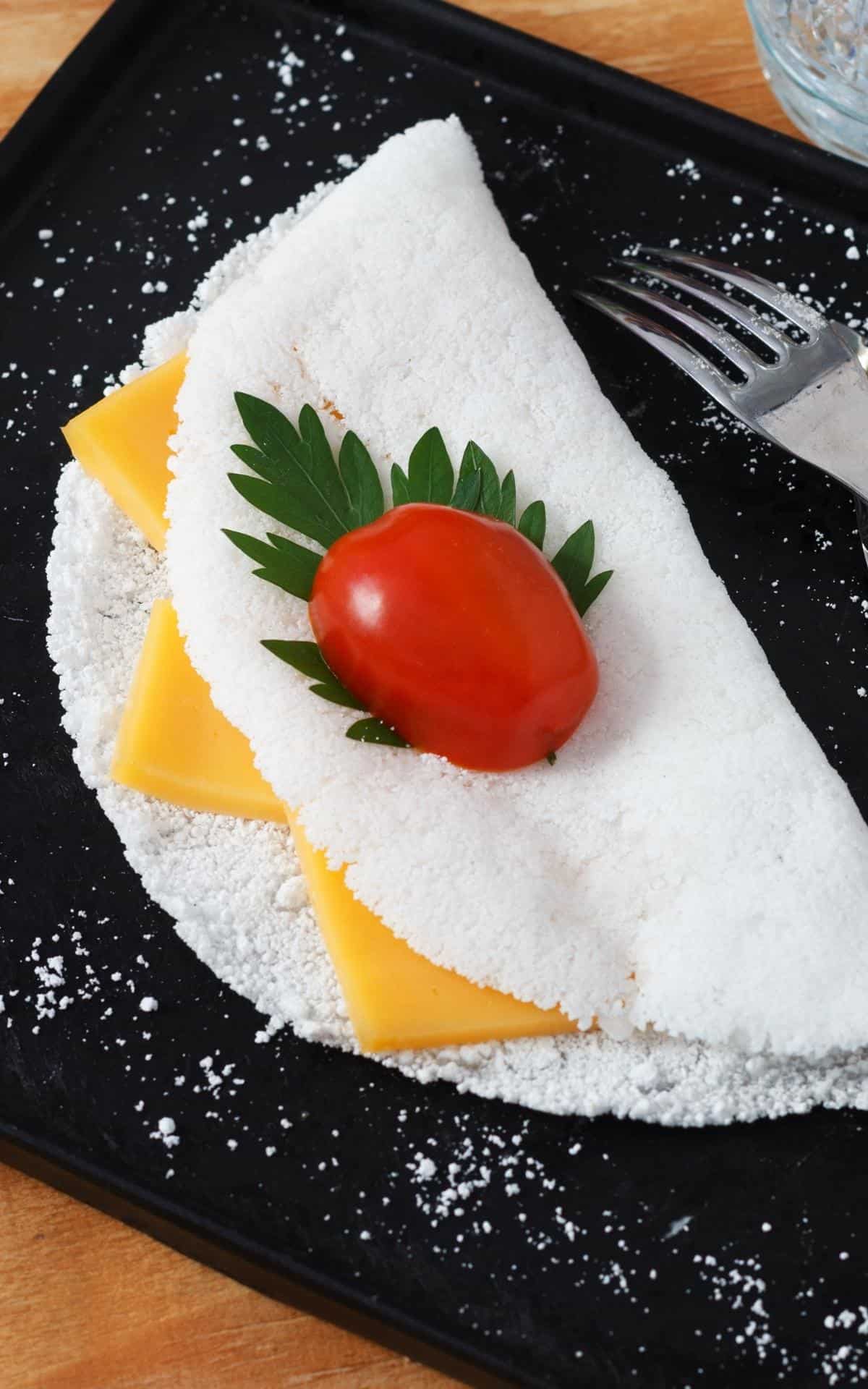
Similarly, it is present in many other Cuban, Puerto Rican, Filipino, or Indonesian dishes that you may dearly love.
As I mentioned, you have likely been eating cassava or dishes made with its derivatives without even knowing it.
If not yet, due to the influx of immigrants to this country and the influence of their cuisines, you probably will, sooner or later. Believe me!
Moreover, with the increasing number of people in the US with celiac disease, the consumption of cassava is ideal because they are naturally gluten-free food.
Table of Contents
- 1 What Is Cassava?
- 2 Nutrients
- 3 What Does It Taste Like?
- 4 Potential Health Benefits
- 5 Potential Drawbacks
- 6 Is Cassava Root the Same As Yuca or Manioc?
- 7 Cassava Plant vs. Yucca Plant
- 8 Is Cassava Root Poisonous?
- 9 Are Cassava Leaves Poisonous?
- 10 Are Cassava and Tapioca the Same?
- 11 Cassava Flour vs. Tapioca Flour
- 12 How to Cook Cassava Properly
- 13 CASSAVA DERIVATIVES
- 14 How to Store (Raw and Cooked)
- 15 Famous World's Cassava Recipes
- 16 How to Cook Cassava (Yuca)
What Is Cassava?
Cassava (scientific name: Manihot Esculenta) is a plant with a starchy, tuberous root native to South America yet also found throughout the tropics, especially in tropical America. The plant is part of the spurge family of plants!
Portuguese merchants and sailors brought it to Africa and Asia in the 16th century.
You may know cassava by many names, including manioc, yuca, and ‘mandioca, aipim, or macaxeira’ (Brazil).
This plant has recently been in the spotlight as a nutritious and easy-to-grow vegetable that does not need much water and can be grown on farms of any size.
It's rich in carbohydrates, in calcium, and contains vitamin C, but deficient in protein and other nutrients.
Its most famous edible part is its fiber-filled and starchy potato-like root. The vegetable root is long and thick and has an outer shiny brown skin with a white, firm interior.
Its center has a woody fiber (see pic. below) that has to be removed after boiling or before frying the cassava.

But this is not all! People also cook cassava leaves, incorporating them into dishes such as maniçoba.
You can also use cassava to make by-products such as tapioca pearls or tapioca flour.
Nutrients
Here is a nutrient profile of 1 cup (about 5.5 oz) of cassava root:
- Calories: 330
- Carbs: 78.4 g
- Protein: 2.8 g
- Fiber: 3.7 g
- Potassium: 558.0 mg
- Magnesium: 43.0 mg
- Calcium: 33.0 mg
- Vitamin C: 42.4 mg
- Niacin: 0.854 mg
- Thiamine: 0.087 mg
- Riboflavin: 0.048 mg
While the root is rich in calories and Vitamin C, which acts as an antioxidant, supports collagen production, and enhances immunity.
However, it lacks protein, making it an incomplete choice for a staple diet. People who eat a lot of cassava should pair it with foods that contain protein.
Cassava leaves are a great source of protein, so nutritionists often advise using the two together while making a dish but both have to be cooked properly before eating.
What Does It Taste Like?
Cassava root has an earthy, slightly sweet, and nutty taste, with a subtle touch of bitterness. Because its flavor is mild, you can cook it with strong-flavored ingredients such as coconut milk.
Potential Health Benefits
Contains resistant starch
If you have diabetes, you understand the importance of soluble fiber in your diet.
Cassava contains resistant starch, which is something similar to soluble fiber, not breaking down so easily during digestion.
It helps release glucose in smaller quantities, making it easier for the body to process. Among other benefits are improving gut health, reducing inflammation and the risk of obesity, and also lowering blood sugar levels (and so helps with insulin resistance).
Contains Vitamin C and Minerals
Cassava is extremely rich in Vitamin C, niacin, thiamine, and riboflavin as well as Calcium, Magnesium, and Potassium.
Vitamin C is essential for your bones, skin, and teeth and is a big part of your immunity system.
Niacin, Riboflavin, and Thiamine are crucial in breaking down carbs and converting them to energy in your body.
Cassava leaves, when dried or cooked, are also edible. You can get a high amount of protein from these leaves.
Potential Drawbacks
Harmful if eaten raw
While cassava has many great benefits, it should never be eaten raw. In its raw form, cassava contains cyanide, which is toxic to humans if consumed in large quantities.
If you are eating cassava, it is best to soak and cook it well. Moreover, you should pair it with a healthy amount of protein in your diet to avoid cyanide poisoning (protein helps break down cyanide).
Higher in calories than other root vegetables
If you are trying to limit your calorie intake to lose weight, cassava may not be the best food for you.
Other root veggies like sweet potatoes, potatoes, and carrots would be better for you. Here's a comparison of the calorie count in a 3.5-ounce serving of each of these:
| Root Vegetables |
Calories (3.5 oz) |
|
Sweet Potato |
91 calories |
|
Carrots |
35 calories |
|
Potato |
71 calories |
|
Cassava |
191 calories |
Cassava derivatives or by-products are lower in nutrients
Processing cassava by chopping or peeling, also makes it lose some of its nutritional value (vitamins, minerals, fiber, and resistant starch), albeit it is needed to avoid side effects.
Although you have to cook it first to eat it, some studies have found boiling cassava seems to retain more nutrients than other cooking methods such as roasting.
Be aware of its derivatives (e.g. tapioca flour). They are usually high in calories but they lack fiber and other nutrients compared to the cassava root.
Eating the cooked root is better than eating dishes prepared with tapioca flour for example.
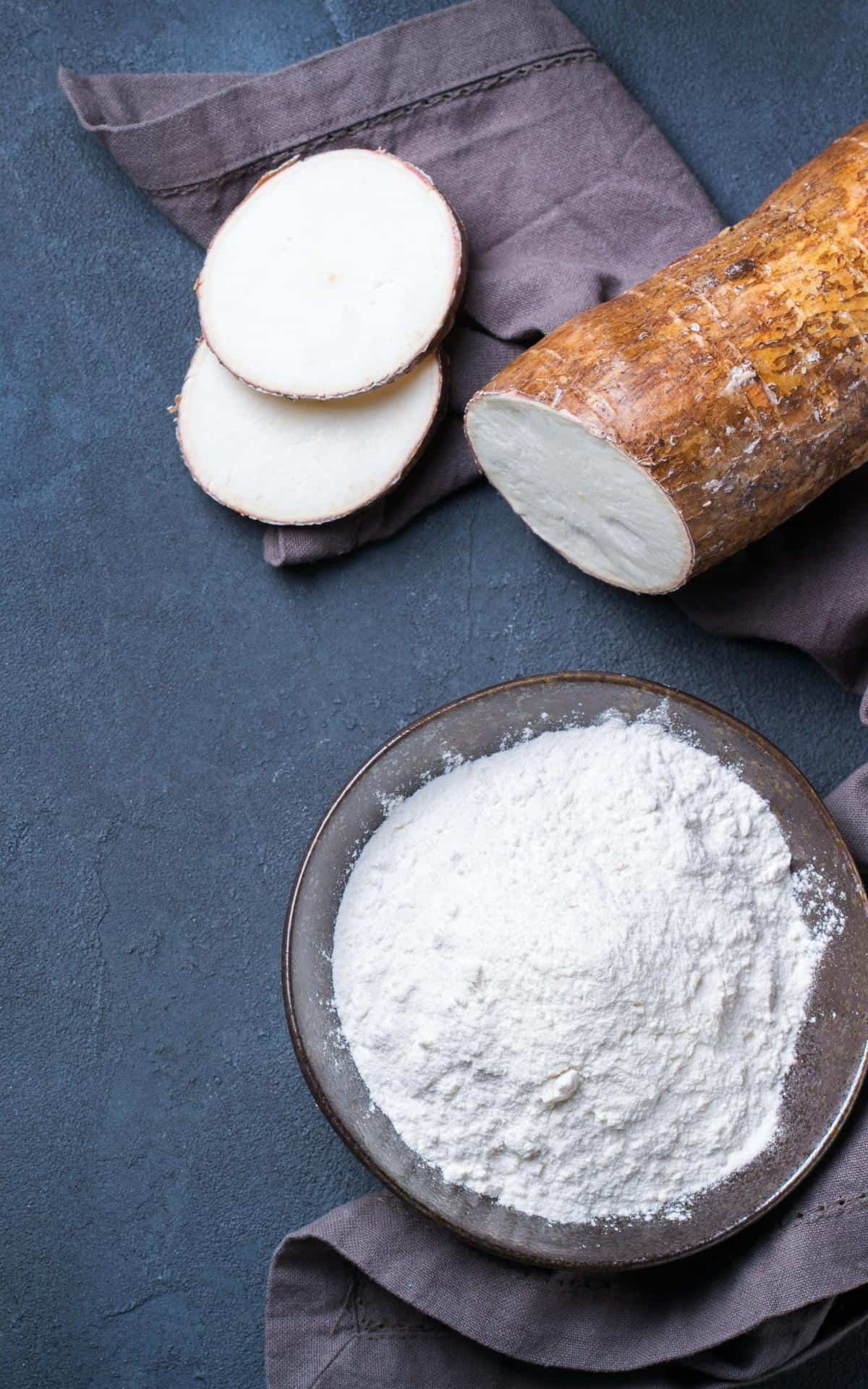
Is Cassava Root the Same As Yuca or Manioc?
Yes, these are names given to the same root. Cassava is often confused with other plants such as yucca (double c) because of a similar-sounding name.
People also think that arrowroot starch is made from cassava but actually, arrowroot starch is made from West Indian arrowroot!
Cassava Plant vs. Yucca Plant
Despite having a similar name (Yuca, spelled with only one c, vs. Yucca, spelled with double c), these two plants are very different from each other. Here are some main differences between them:
Appearance
Both cassava and yucca plants can grow to be quite tall (anywhere up to 40 feet). But their leaves are very different. Cassava leaves are a dark shade of green but have yellow and red colors interspersed in them.
On the other hand, yucca leaves are bluish-green and have a very thin and sharp shape, much like a sword or a dagger. The yucca plant also has bell-shaped white flowers.
Moreover, cassava stems grow straight and their roots are edible, whereas yucca roots are not edible.
Usage
Cassava is an edible plant with both its leaves and roots being edible. It is a staple plant in many tropical countries.
But yucca is more of a decorative plant although the fruit and flower petals are edible.
In Central America, after its reproductive organs (anthers and ovaries) are removed due to their bitterness, the petals are blanched for 5 minutes, and then cooked with tomato, onion, chili (yucca a la Mexicana ) or served in tortitas con salsa (egg-battered patties with green or red sauce).
In Guatemala, the petals are boiled and eaten with lemon juice while in El Salvador, the tender tips of stems are eaten in a dish called cogollo de izote.
Nutrition
As said earlier, cassava root has high amounts of calories, Vitamin C, and resistant starch.
On the other hand, yucca root contains anti-inflammatory properties (great for the treatment of arthritis among others) as well as great nutrients such as vitamins B, C, iron, and calcium.
Is Cassava Root Poisonous?
Yes, cassava root is poisonous. It contains cyanogenic glycosides, which can cause cyanide poisoning in your body when you eat it raw.
Cyanide poisoning is dangerous. It can damage your organs, make you paralyzed, damage your nerve functions, or even cause death.
Protein can help your body get rid of cyanide! People who do not eat a nutritious diet regularly, lack protein in their bodies and are at a higher risk.
Are Cassava Leaves Poisonous?
Cassava leaves also contain the same cyanogenic glycosides. They can potentially cause cyanide poisoning if you do not cook them properly before eating them.
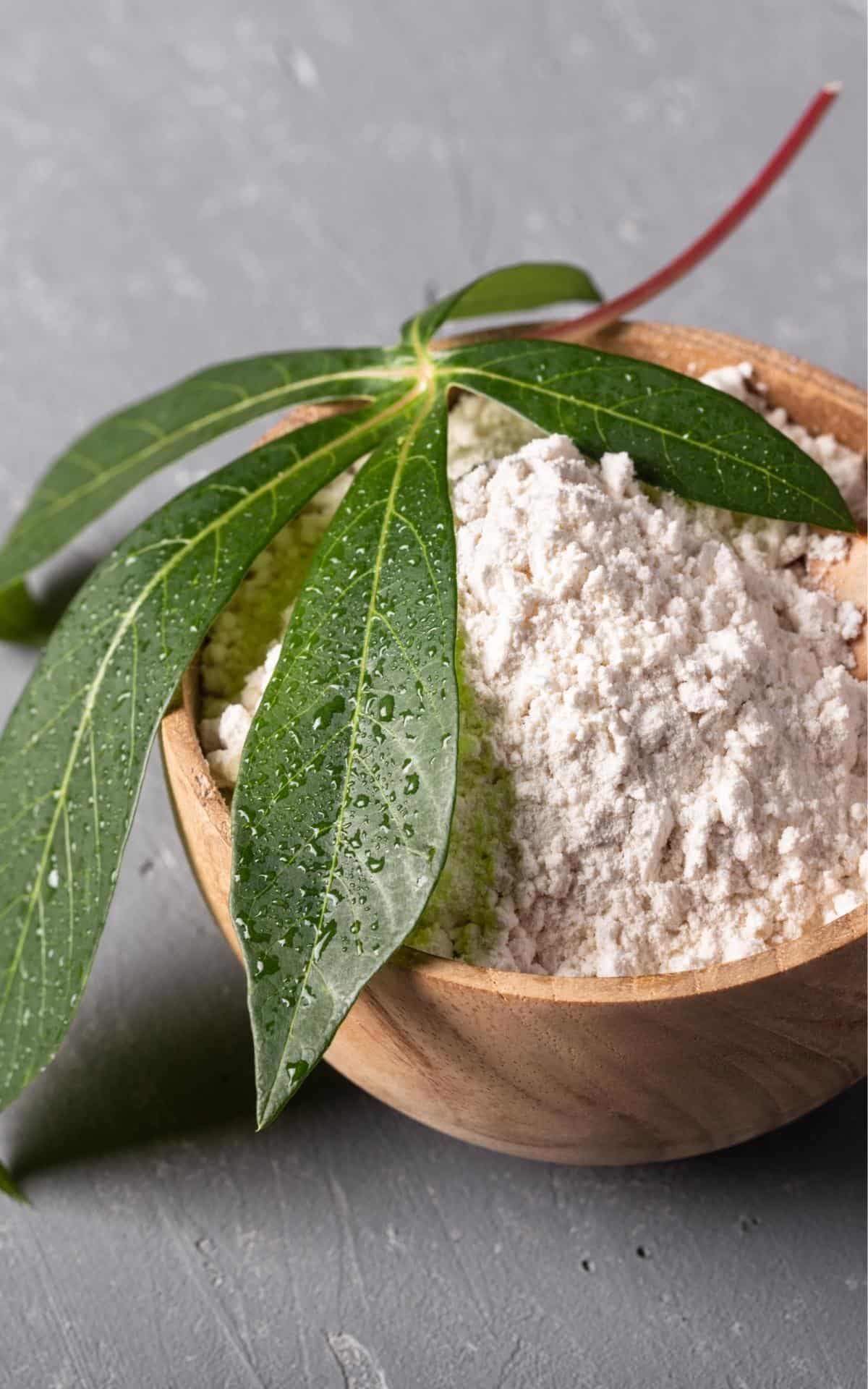
Are Cassava and Tapioca the Same?
Cassava is the root, whereas tapioca is its by-product. You can make several things from the cassava root, such as cassava flour bread, fries, chips, cakes, and tapioca crepes. In Brazil, several dishes use the cassava leaves as well (e.g. maniçoba, also known as feijoada Paraense).
Tapioca is made from the cassava root, but only the starchy part of it and not the rest (peel).
Cassava Flour vs. Tapioca Flour
Cassava flour is made from the entire root of the cassava plant. This makes it more fibrous and creates a thicker sauce when you use it.
However, in most cases, you can switch tapioca and cassava flours.
How to Cook Cassava Properly
Before eating the cassava root, treat it properly to get rid of its cyanogenic glycosides. You must adopt these steps:
- Peel the root and remove the outer layer. It is best to use a knife instead of a peeler because the outer layer is hard.
- Slice it into small pieces
- Place it in water and let it soak.
- Boil the cassava root
- Wait until the root is tender, and then throw away the water in which you boiled it.
- Remove the woody fiber in the center.
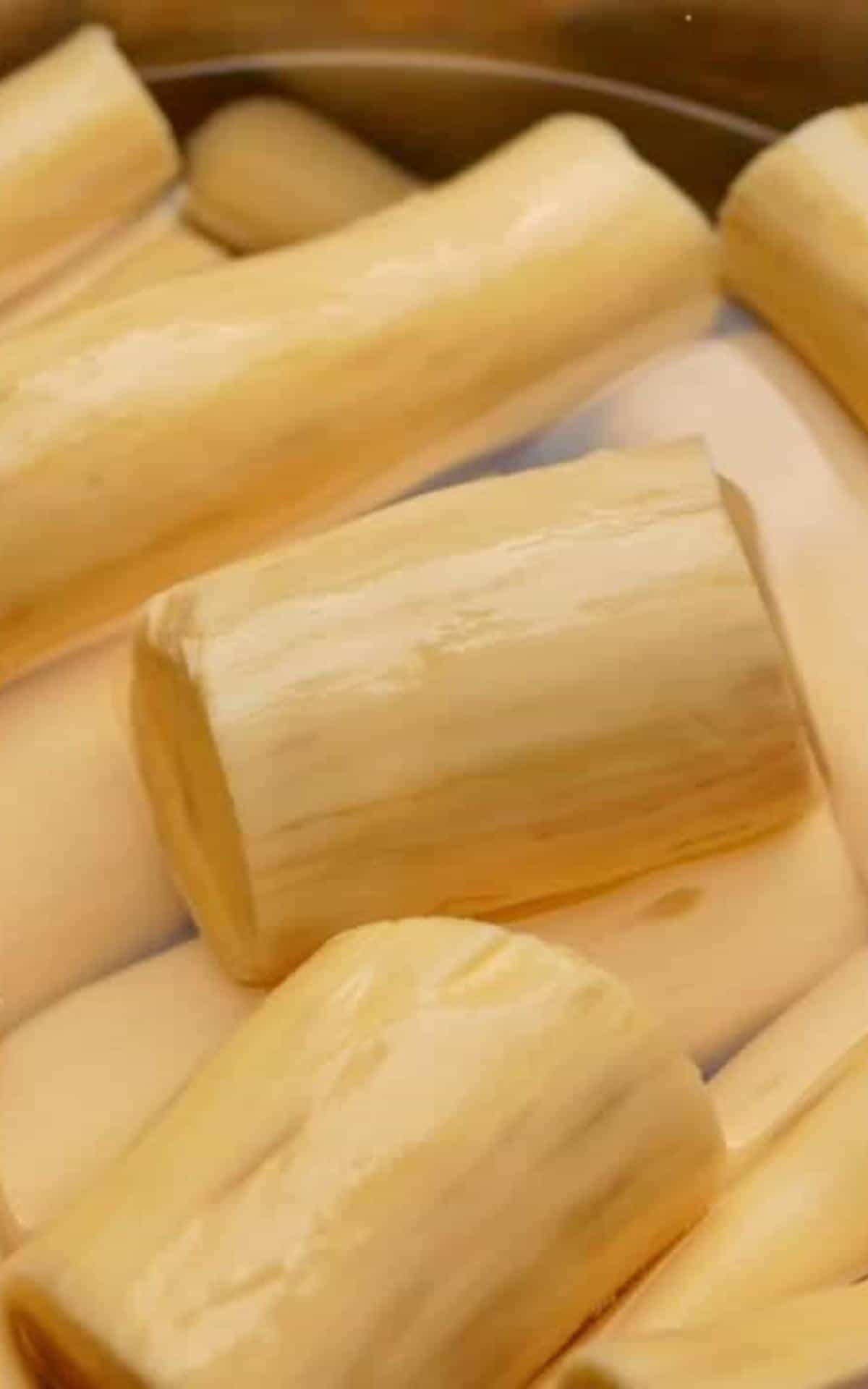
The CDC recommends soaking these roots in the water for 4-6 days if they are taken directly from the wild.
Even if the cassava is frozen, you should peel, soak, and boil it before eating unless the packaging clearly states that it has been processed.
Foods like tapioca and cassava flour available in the market are processed and safe to eat without this process.
CASSAVA DERIVATIVES
In Brazilian cuisine, its main by-products are:
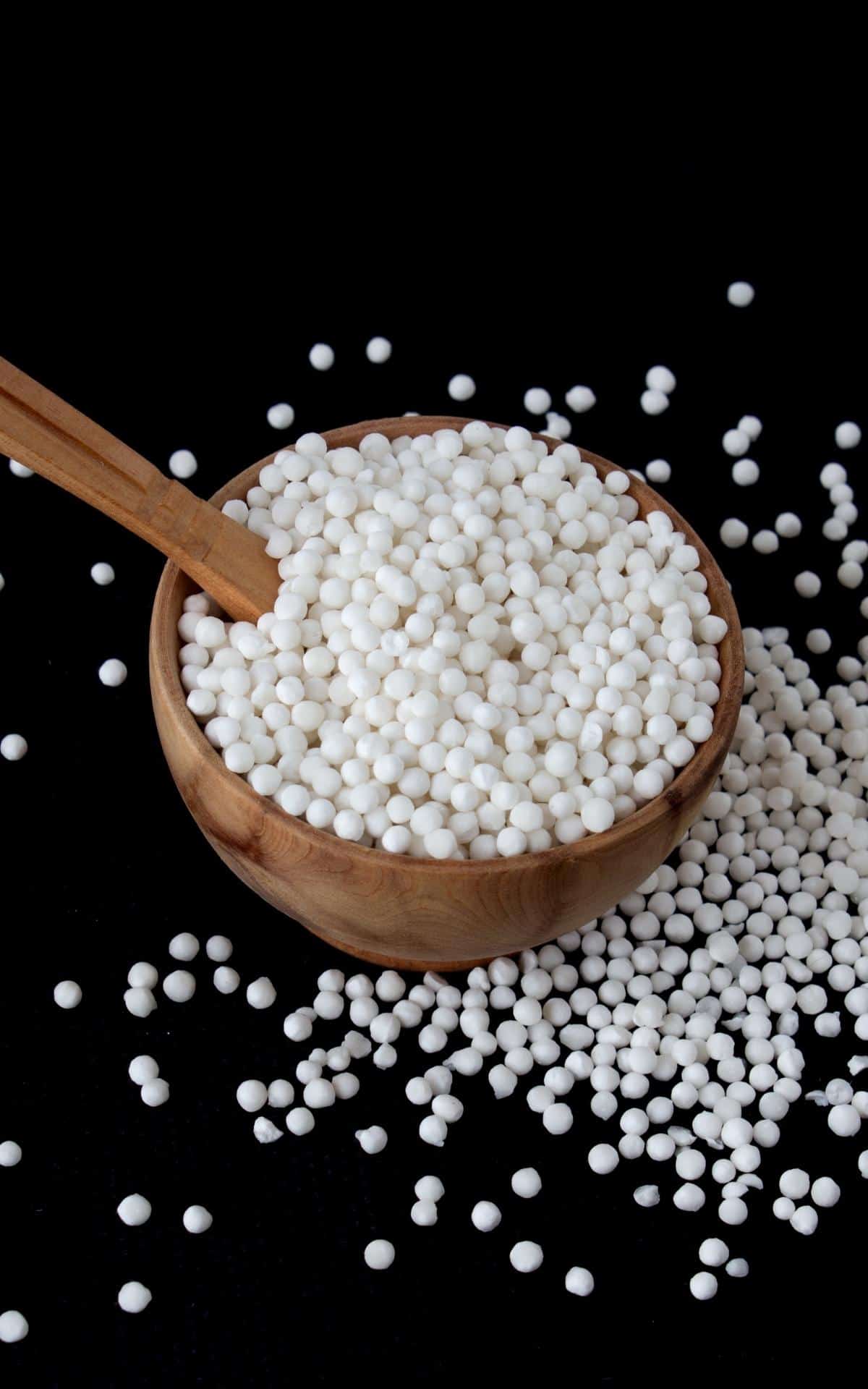
- Tapioca pearls (it makes tapioca pudding)
- Granulated tapioca (it has an irregular shape and its mixed "grains" vary in size. It has to be soaked in hot liquids such as coconut milk to soften and be pliable. It makes tapioca couscous and tapioca cake).
- Manioc flour (it is the main ingredient of farofa and has a coarse texture)
- Sour starch (it is fermented tapioca flour, has a sour taste, and makes dense Brazilian cheese rolls when combined with regular tapioca flour)
- Tapioca flour (it is the finest of the tapioca flours and often makes airy Brazilian cheese rolls)
These products are available online (Amazon.com), in Latin markets, and some types are also available at American and Asian supermarkets.
How to Store (Raw and Cooked)
You can buy cassava at many food markets and grocery stores in Latin America and the Caribbean.
RAW: In grocery stores, the root presents a layer of wax on its peel to preserve it.
If you have bought an unpeeled yuca, you should store it in a dry place that is not exposed to the direct sun. It will last up to 7 days.
If the yuca you bought was peeled, place it in the fridge, fully soaked in water which must be replaced every day. It will keep well for 2-3 weeks. Or, you can keep the peeled yuca root frozen, lasting for 2-3 months in the freezer.
COOKED: Boiled yuca must be stored in an airtight container in the fridge for up to 3 days, or frozen for up to one month.
Famous World's Cassava Recipes
Here are some famous dishes that you can make with cassava root or leaves:
- Casabe (Unleavened cassava flatbread from the Caribbean and some South American countries)
- Fufu (A dish from Western African countries)
- Yuca Chips
- Yuca con Mojo (Cuban side dish)
- Mofongo de Yuca (Dominican main dish)
- Carimañolas (Panamenian yuca fritters)
- Bammy (Jamaican side dish)
- Cassareep (Cassava concentrated juice from Guyana)
- Attiéké (Fermented cassava couscous from Ivory Cost)
- Getuk Ubi Kayu (Indonesian pressed yuca cake)
- Sopa de caracol (Honduran seafood soup)
- Pasteles de yuca (Puerto Rican tamales)
- Kakanin (Filipino cassava flan)
Brazilian Cassava Recipes
Cassava is important in many cultures, including Brazilian culture.
In fact, it is one of the very foundations of Brazilian cuisine and is present in many traditional dishes made with cassava roots such as:
- Mashed yuca (purê de macaxeira)
- Yuca Fries (Mandioca frita)
- Yuca chips
- Cassava cake (bolo de aipim)
- Yuca flan (pudim de macaxiera)
- Yuca soup (sopa de macaxeira)
- Brazilian chicken shepherd's pie (Escondidinho de frango)
- Brazilian shrimp soup (Bobó de Camarão)
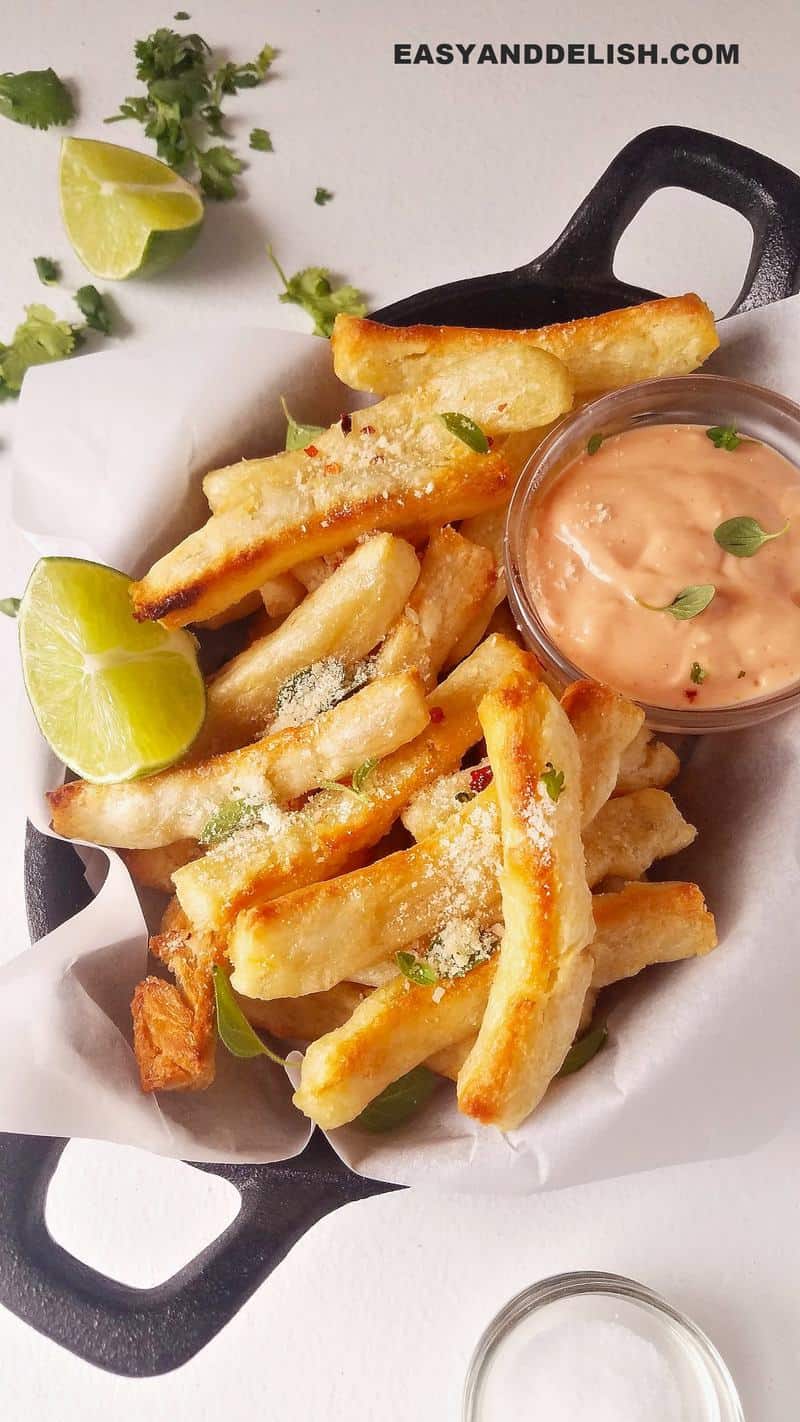
After processing cassava in several different ways, here are a few cassava dishes made with its derivatives:
- Pão de queijo (Brazilian cheese bread)
- Brazilian tapioca pudding (sagú)
- Brazilian tapioca recipe
- Tapioca couscous
- Farofa recipe (manioc flour couscous)
- Pirão (manioc flour gravy)
- Tapioca Cake (Bolo de Tapioca)
- Tutu de Feijão (Brazilian refried beans)

PIN & ENJOY!
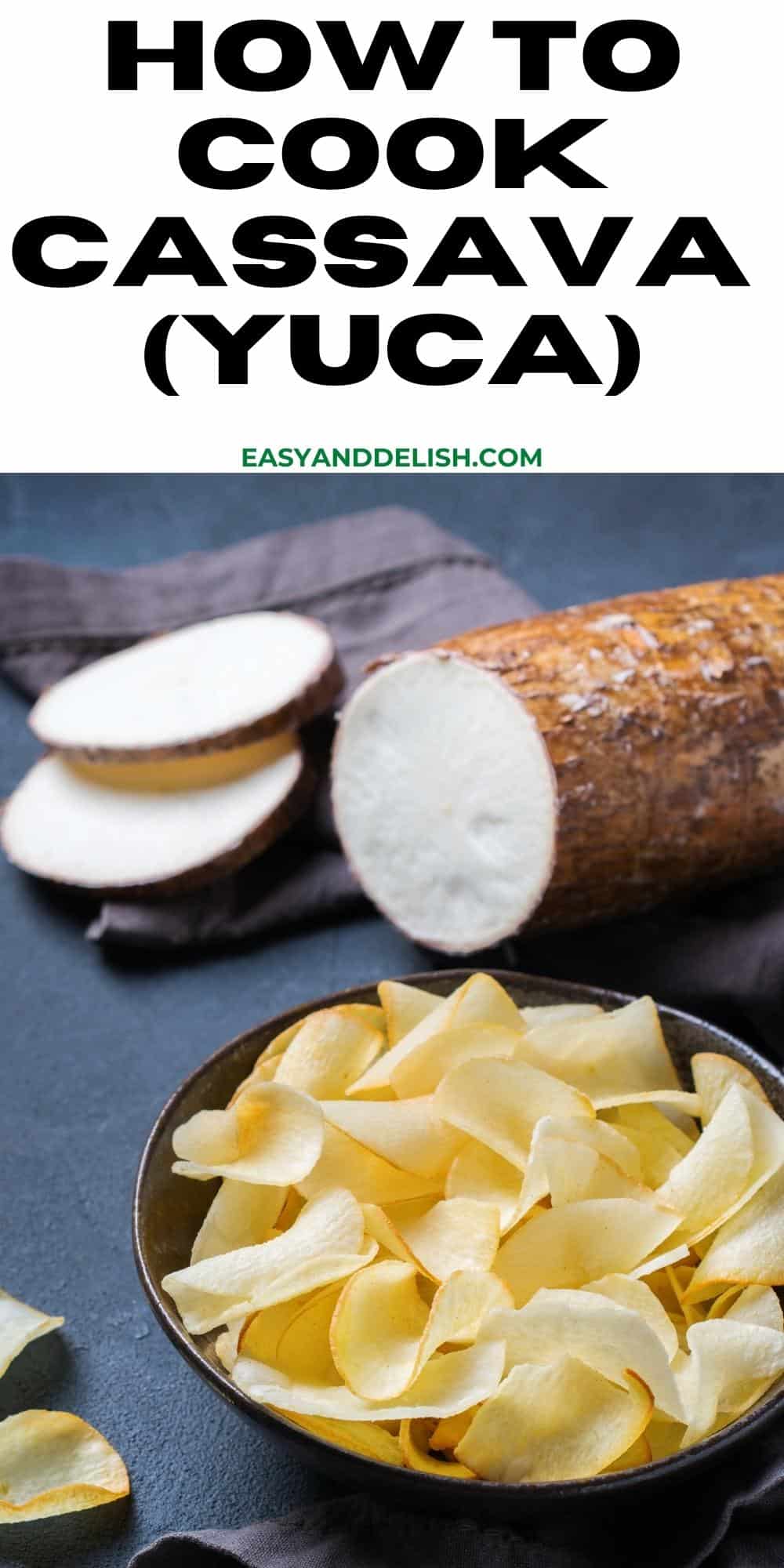
How to Cook Cassava (Yuca)
Equipment
- 1 pot
Ingredients
- 16 oz cassava root peeled, thawed, and cut into chunks
- 1 tablespoon salt
- Enough water to coverthe cassava
Instructions
- Peel the root properly and remove the outer layer. It is best to use a knife instead of a peeler because the outer layer is hard. I prefer to buy it peeled and frozen because most fo the time it doesn't require soaking. In this case, thaw it in the fridge overnight.
- Slice it into small pieces.
- Cover it with enough water and let it soak in the fridge for at least 4 days, replacing the water every day.
- Add salt to enough water in a pot and boil the cassava root over medium-high heat for about 15-20 minutes, or until fork tender. The cooking time will depend on the size of the chunks.
- Wait until the root is tender, and then throw away the water in which you boiled it.
- Remove the woody fiber in the centera dn enjoy with butter if you want.
Recipe Notes
Nutrition
** Nutrition labels on easyanddelish.com are for educational purposes only. This info is provided as a courtesy and is only an estimate, since the nutrition content of recipes can vary based on ingredient brand or source, portion sizes, recipe changes/variations, and other factors. We suggest making your own calculations using your preferred calculator, based on which ingredients you use, or consulting with a registered dietitian to determine nutritional values more precisely.
Please note that health-focused and diet information provided on easyanddelish.com is for educational purposes and does not constitute medical advice, nor is it intended to diagnose, treat, cure, or prevent disease. Consult with your doctor or other qualified health professional prior to initiating any significant change in your diet or exercise regimen, or for any other issue necessitating medical advice.
The post was first published on April 25th, 2013.



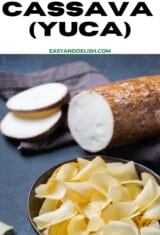
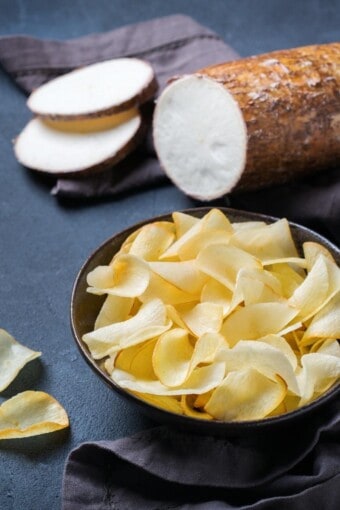
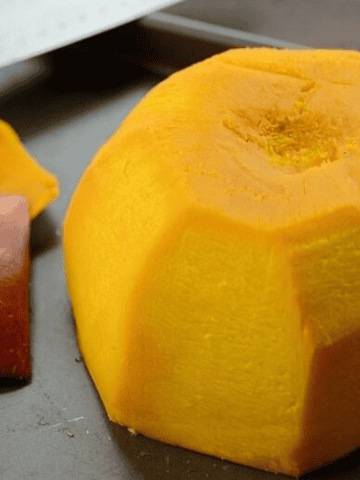
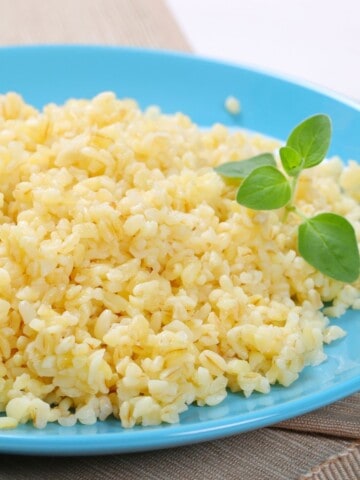


Bia Nunez says
This post was so informative! I’ve always wondered about cassava and its benefits, and your cooking tips are super helpful too. I can't wait to try making cassava fries at home! Thanks for sharing!
AG says
Great post! I love how you covered the health benefits of cassava and provided easy cooking tips. I’ve been wanting to try making cassava fries at home, and your recipe sounds perfect. Can’t wait to experiment in the kitchen!
YOUTUBE APK says
This post was super informative! I had no idea cassava had so many health benefits. I'm excited to try some of the cooking methods you shared. Thanks for making it easy to understand!
Sound of text says
Thanks for the informative post on cassava! I had no idea it was so versatile and nutritious. Can't wait to try cooking it in my kitchen. Great recipes and tips shared in the post!
Denise Browning says
Thank you! I am glad all our information about cassava was useful to you!
Lilly says
Thanks for making my life easier. I had to write an essay about cassava for school and your page was quite useful. The explanation about all the derivatives was quite interesting as I wasn't aware of them. The best part, I got a great grade. 🙂
beejay says
Late to the game, but thanks so much for this info! I had just found a recipe in Portuguese that included Polvilho Azedo in the ingredients. I wondered if it might be the same as tapioca starch and got this post when I asked Google. 😉
Doe it thicken as well as affect flavor? And did you know that your site wouldn't let me use quotation marks??? /;)
Thanks!
Denise Browning says
Hi, Beejay! No, tapioca flour is not the same as sour tapioca starch. If you read my article you gonna see basically that sour tapioca starch is fermented and also presents a course texture while tapioca flour has a fine texture like a powder. In order to use the sour tapioca starch, you have to pass the flour through a fine colander so it will become like a powder or almost as fine as the regular tapioca flour. It won't make a big difference in the texture of the final dish but the taste that the sour tapioca starch gives the dish is slightly sour.
Yaweh says
Do the eat the leaves of the cassava
Denise Browning says
Hi, Yaweh!
Cassava leaves must be cooked before eating. They are usually boiled for at least 10 minutes and the boiling water is discarded once leaves are cooked. The reason why is cassava leaves and roots are high in hydrocyanic acid which is poisonous.
Indian Cooking Recipes says
Thank you sooooo much, Sarah!
That’s exactly what I needed!
Blessings Inge
agus isdiyanto says
Very interesting . Can i know how to make sour starch in Brazil more detail ?
Denise Browning says
Agus:
Thanks for stopping by!!!
Just as the Tapioca Starch (Polvilho Doce), the Sour Starch (Polvilho Azedo) is extracted from cassava/yuca, which is first grated and washed, and then has the juice from its pulp squeezed out into a bucket. The starch is then extracted from the liquid that accumulates in the bucket, and subsequently dried and sifted. The differences between those 2 starches is that the sour starch is left to be fermented for about 2 weeks at room temperature and has a coarse texture while the tapioca starch is not fermented and has a fine texture-- similar to cornstarch. I hope I have answered your question. Have a great week!!! I am glad that you have curiosity about cassava and its derivatives. Cassava and its by-products are pillars of Brazilian cuisine and absolutely favorites of mine.
Amira says
Hmm very interesting, never heard of it although I am from Africa... may be I should look ti up in Arabic. Great post.
Denise Browning says
Thanks,Amira! Nigeria is the country with the largest production of cassava in the world.
Mi Vida en un Dulce says
In Peru we call it yuca, and it's very popular. I don't like it when it is just boiled, I prefer when in addition, you fried it....!!!
Raymund says
Cassava is such an important ingredient in the Philippine cuisine, we have lots of dessert made out of this ingredient, it goes well with coconut milk
Denise Browning says
Exactly, Raymund! This vegetable root is quite important in many cuisines including Brazilian and Filipino.
Deb says
Wildly informative post! Thank you for sharing a wealth of information about cassava!
Lail | With A Spin says
Very informative post, my friend. Thank you. I love bubble tea but never used in my cooking. I have an unopened package of tapioca pearl and I keep thinking I need to make something with the pearls.
Denise Browning says
Lail: Thanks! If you accept a suggestion, try my red wine tapioca pudding. I love this pudding!!! The better the wine, greater is the taste. The link is at the end of the post. I am happy that you are back and had a great time in Italy.
Nami | Just One Cookbook says
I enjoy drinking bubble tea at least once a week and I have made some Asian desserts using tapioca pearls. I didn't know how cassava looks like and there are so many kinds! Very education post for foodies!
Denise Browning says
Thanks, Nami! Cassava and its byproducts are more present at our tables than we think or even know.
Coffee and Crumpets says
Great informational post! I love cassava in all forms and we use a lot of it in Indian cooking too, from the puddings to fritters made with tapioca pearls.
Nazneen
Denise Browning says
Is that right, Nazneen? I am so glad to hear that many cultures make great use and enjoy cassava and its byproducts in different, creative dishes.
Abbe@This is How I Cook says
Denise, this was a great article. I have always wanted to know if cassava and yuca are the same. So you can just slice these and fry them and make yuca chips? Very informative. Thanks!
Denise Browning says
Abbe: Thank you! Yes, yuca (not yucca) is the same as cassava. First, it has to be peeled, cut, have the woody fiber in the center removed, and then fried. You can make either chips or fries. I much prefer cassava fries than the ones made from potatoes. There is only a problem: it is very addictive! 🙂
SallyBR says
Great post! Eu adoro mandioca frita, como voce bem deve imaginar... tem algum brasileiro que nao seja louco por mandioca?
faz uns tempos eu publiquei no meu blog um pequeno artigo sobre mandioca frita, se voce nao se importar de eu incluir o link, vai aqui (se preferir nao colocar link, pode cortar, ok?)
https://bewitchingkitchen.com/2010/01/17/mandioca-frita-101-fried-yucca-root/
agora fiquei com vontade de comer farofa... 😉
Denise Browning says
Hi, Sally! Adorei a sua visita e obrigada pelo link. Já aprovei a publicação do mesmo aqui sim.
Eu sei...Todas as vezes que falo de macaxeira (como dizemos no nordeste), me dá água na boca também. Nunca comi nada com macaxeira que não tenha amado. É uma das minhas raízes favoritas mesmo. Um abraço!
Tesei says
A very useful post! I've always loved Tapioca, and Farofa, and bubble tea... but up until now I had now idea they were all related and in which way... Thank you very much, very enlightening!
Denise Browning says
Thank you, Tesei, for stopping by and leave a comment. This makes me super happy. I am glad that you have learned new things about this ancient root vegetable and its derivatives. Wishing you a great day!